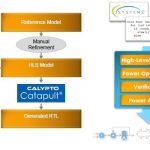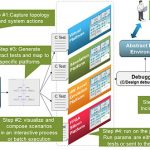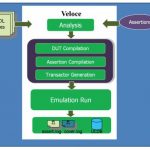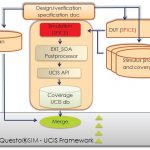I’ll start with a quick note on DVCon. This seems to be gaining momentum each year. In addition to the events in the US, Europe and India, a DVCon event is now planned for China, kicking off in Shanghai in 2017. At a time when we’re all bemoaning the future of EDA and EDA conferences, DVCon is booming internationally, no doubt reflecting… Read More
Tag: accellera
HW/SW Interfaces for Portable Stimulus
With growing size and complexity of SoC, the semiconductor community is realizing the growing pain of verification. The cost of SoC verification grows exponentially with design size. Moreover, there is no single methodology for verifying a SoC; multiple engines are used in different contexts through different verification… Read More
Leveraging HLS/HLV Flow for ASIC Design Productivity
Imagine how semiconductor design sizes leapt higher with automation in digital design, which started from standard hardware languages like Verilog and VHDL; analog design automation is still catching up. However, it was not without a significant effort put in moving designers from entering schematics to writing RTL, which… Read More
Coming to a Workstation Near You: Accellera’s Portable Stimulus Standard
Portable Stimulus has become such a popular standards topic of late that I thought it would be good to take a break this month from my low power series to bring you, my valued readers, more information about it from one of my colleagues, Dennis Brophy, who is working to help drive development of this standard within Accellera. I’ll … Read More
Nine Cost Considerations to Keep IP Relevant –Part2
In the first part of this article I wrote about four types of costs which must be considered when an IP goes through design differentiation, customization, characterization, and selection and evaluation for acquisition. In this part of the article, I will discuss about the other five types of costs which must be considered to enhance… Read More
Moving up Verification to Scenario Driven Methodology
Verification complexity and volume has always been on the rise, taking significant amount of time, human, and compute resources. There are multiple techniques such as simulation, emulation, FPGA prototyping, formal verification, post-silicon testing, and so on which gain prominence in different situations and at different… Read More
UVM Debugging Made Easy & Productive in Questa
As design complexity and size is increasing, SoC verification has become one of the most difficult and time consuming tasks in the design closure.UVM (Universal Verification Methodology, an accellera initiative) is one of the best verification methodologies that support common language, coherent strategy, clarity and transparency… Read More
Improving Verification by Combining Emulation with ABV
Chip deadlines and the time to achieve sufficient verification coverage run continuously in a tight loop like a dog chasing its tail. Naturally it is exciting when innovative technologies can be combined so that verification can gain an advantage. Software based design simulators have been the mainstay of verification methodologies.… Read More
Coverage Driven Verification for Analog?
We know there is a big divide between analog and digital design methodologies, level of automation, validation and verification processes, yet they cannot stay without each other because any complete system on a chip (SoC) demands them to be together. And therefore, there are different methodologies on the floor to combine analog… Read More
Analog Model Equivalence Checking Accelerates SoC Verification
In the race to reduce verification time for ever growing sizes of SoCs, various techniques are being adopted at different levels in the design chain, functional verification being of utmost priority. In an analog-digital mixed design, which is the case with most of the SoCs, the Spice simulation of analog components is the limiting… Read More






